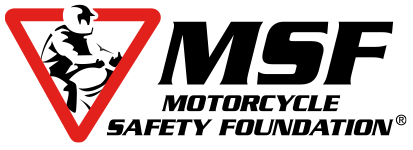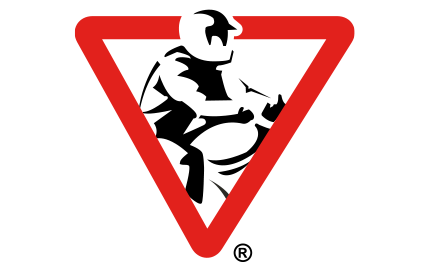DirtBike School
Dirt bike training! Start your motorcycle journey off-road.
Quick Links
General Information
DirtBike School is a fun, one-day, hands-on training session available to anyone six years old or above. At training sites, MSF-certified DBS Coaches will teach you basic riding skills and responsible riding practices, including risk management and environmental awareness.
The Closed Range Exercise provides hands-on riding training with an emphasis on safety and skill development. For more advanced learning, the Introduction to Trail Riding is the next level DirtBike School course designed to familiarize riders with riding off-road on actual trails.
Dirt Bike Riding Tips
- Always wear a DOT-compliant helmet, goggles, long sleeves, long pants, over-the-ankle boots and gloves.
- Except for dual-purpose models, never ride on paved surfaces except to cross when done safely and permitted by law – another vehicle could hit you. Dirt bikes are designed to be operated off-highway.
- Never ride under the influence of alcohol or drugs.
- Supervise riders younger than 16; dirt bikes are not toys.
- Never permit youngsters to ride dirt bikes that are too tall or too powerful for their capabilities.
- Don’t ride alone on remote trails. Use the buddy system.
- Ride only on designated trails and at a safe speed.
- Take a hands-on riding course.
Overview
DirtBike School (DBS) was created by the Motorcycle Safety Foundation (MSF) to provide hands-on rider training with an emphasis on safety and skill development. New riders, or others who want to improve their riding skills, will benefit from the DBS course taught by certified MSF DirtBike School Coaches. During the course, students learn basic techniques for safely riding off-highway motorcycles. Lessons are presented at controlled off-highway riding sites specifically selected for the course.
Curriculum
| Lesson | Objectives | |
|---|---|---|
| 1 | Class Welcome/Introduction |
|
| 2 | Range Signals, Rules and Warm-up Exercises |
|
| 3 | Controls |
|
| 4 | Engine Start/Stop |
|
| 5 | Moving the Motorcycle |
|
| 6 | Starting/Stopping Drill |
|
| 7 | Riding Posture |
|
| 8 | Shifting |
|
| 9 | Lower Body Control |
|
| 10 | Turning |
|
| 11 | Riding Management Discussion Lesson - No Riding |
|
| 12 | Turning and Gap Selection |
|
| 13 | Counterbalancing |
|
| 14 | Riding over Obstacles |
|
| 15 | K-Turn |
|
| 16 | U-Turns |
|
| 17 | Traversing Hills |
|
| 18 | Riding ResponsiblyDiscussion Lesson - No Riding |
|
| 19 | Post-Ride Check/Dismissal |
|
Recommended Next Steps
Go ride. Practice the drills taught in class and reference Tips & Practice For The Off-Highway Motorcyclist. If riding with your children, reference Parents, Youngsters and Off-Highway Motorcycles. If your goal is to earn a license that will allow you to ride on the street, look into the MSF Basic RiderCourse.


